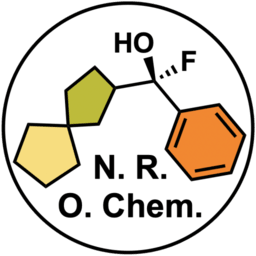Synthesis of Lumateperone
Retrosynthetic Analysis
Lumateperone is a chiral compound that contains 4 fused rings in the molecule, 3 of which are heterocycles. The key steps for the synthesis of Lumateperone involve a simple alkylation reaction and a ring formation reaction giving rise to the core of the molecule and exposing an indole fragment that could be forged via a Fischer indole synthesis.
Synthesis of Lumateperone
The synthesis begins with a Fischer indole synthesis of the hydrazine with the cyclic ketone to give a tricyclic indole. The Fischer indole synthesis allows the formation of indoles from the reaction between arylhydrazines and aldehydes or ketones under acidic conditions.
A suggested mechanism for this transformation involves the formation of a phenylhydrazone that isomerizes to the corresponding enamine. After protonation, a [3,3]-sigmatropic rearrangement takes place, giving rise to an imine. The resulting imine undergoes cyclization and generates a cyclic aminal that delivers the desired indole upon elimination.
Subsequent reduction with triethylsilyl hydride and treatment of the resulting product with (R)-mandelic acid in methanol first, followed by formation of the (S)-mandelic acid diastereomeric salt, and freebasing with aqueous sodium hydroxide delivers the chirally pure cis-indoline. This is a diastereomeric resolution.
The method of diastereomeric resolution involves an enantiopure resolving agent that reacts with the racemate to form a pair of diastereomeric salts. The solubility difference between the pair of resulting salts allows an efficient enantioseparation by crystallization of the less soluble salt. After removal or recovery of the resolving agent, the desired enantiomer can be isolated. For the sake of this example let’s say that this is the less soluble salt and this is the more soluble salt. Then just by filtering off the salt, you can obtain the enantioenrich product. Now, If you use (S)-mandelic acid instead, you obtain the enantiomeric pair of the previous ones. But here is the thing, if we said the desired product previously generated the less soluble salt, now it becomes the more soluble salt, and you may find the desired product in the filtrate upon removal of the solid residue.
In order to forge the core of the molecule, the secondary amine was first protected with ethyl chloroformate.
The resulting substrate is then subjected to a Buchwald-Hartwig coupling in order to swap the halogen atom with a protected amine. This two-step transformation for the facile conversion of a 2-chloropyridine to the corresponding 2-aminopyridine employing benzophenone imine. For more information, check out the post about the synthesis of Lasmiditan.
The cyclization precursor is then N-alkylated with ethyl bromoacetate. Then, upon hydrolysis of the diphenylamine, the disguised amine is exposed, and the tetracycle is formed via spontaneous ring closure.
A second N-alkylation gives the methyl amide that is reduced to the corresponding tertiary amine upon reduction of the carbonyl group with borane in THF.
The resulting piperazine is then subjected to basic conditions to effect the carbamate hydrolysis.
Final N-alkylation with this chloro phenylbutanone and treatment of the free base with para-toluenesulfonic acid in isopropanol provides lumateperone tosylate.
Reference work:













